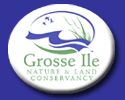

Honeybee Friendly Plants
by Tracey Gaudette
Any flowering plant that is not deep throated is attractive to honey bees. They can't make significant amounts of honey from a few flowers in a garden however, so, believe it or not, the most important honey plants in lower Michigan are the plants most people commonly consider weeds in their yards. The bees build up their spring flow on dandelions and make the bulk of their summer honey on clover. The best thing the average person can do for the bees is NOT to "tru-green" their yard. Fall honey flows come from goldenrod and aster. In the spring some significant flows come from flowering trees such as the Basswood tree, also known as the Linden. If there are large fields of any kind of wildflower or flowering crop plants, like hay , bees will make honey from that. In my yard one of the favorite shrubs is the butterfly bush (genus Buddleia). It blooms late, I even saw bees on it two days ago because it still has a few blooms after several hard frosts. I have sunflowers and various flowering herbs and of course, Bee Balm in my flower beds and these all attract traffic. Sunflowers are especially fun because of the large flower head you can see many species of bees, both honey bees and native pollinators on the same flower head at once. Vegetables and fruits that seem to attract the bees are: strawberries, cucumbers and broccoli that has gone to flower. All forms of squashes and pumpkins attract many types of pollinators, including bumblebees. Wild mustard that people hate to see growing in their yards and fields seem to attract the bees. The different varieties of thistles also are attractive to bees.
For the home garden the easy answer is to plant a variety of herbs, for example borage, organo, garlic chives, regular chives all are attractive to bees. All of the mint family are good bee plants, as are all of the mustard family.Hope this helps.
The list below includes the possible date of nectar flow for honey bees.
APPENDIX V
MICHIGAN NECTAR AND POLLEN SOURCES
Source: Roger Hoopingarner, PhD, Michigan Beekeepers’ Association 1996 Calendar
Soft maples 3/5 – 3/25
Blackberry
6/2 – 6/18
Willows
3/20 – 4/15
Raspberry
6/3 – 6/20
Dandelion
4/10 – 4/30
White Sweet Clover
6/10 – 7/15
Hard maples
4/15 – 4/25
Milkweed
6/10 – 7/15
Sweet Cherry
4/15 – 5/5
Basswood
6/20 – 7/5
Tart Cherry
4/18 – 5/10
Star Thistle
6/25 -7/31
Peach
4/18 – 5/5
Anise Hyssop
7/1 – 9/15
Pear
4/19 – 5/4
Catnip
7/1- 8/30
Apple
4/23 – 5/25
Buckwheat
7/5 – 8/10
Plum
4/23 – 5/7
Peppermint
7/15 – 8/30
Yellow Rocket
4/28 – 5/23
Purple Loosestrife
7/15 – 8/31
Blueberry
5/3 – 6/20
Japanese Knotweed
7/25 – 8/29
Bird’s-foot Trefoil
5/23 – 6/25
Sunflower
8/1 – 8/30
Black Locust
5/23 – 6/5
Mountain Mint
8/1 – 9/30
Alfalfa
5/24 – 6/15
Blue Globe Thistle
8/1 – 8/30
Alsike Clover
5/24 – 6/30
Alfalfa (2nd cut)
8/5 – 8/25
White Dutch Clover
5/24 – 6/20
Goldenrods
8/25 – 9/30
Red Clover
5/24 – 6/20
Asters
9/10 – 10/30
Yellow Sweet Clover
5/26 – 6/20
In certain areas of Michigan, Tulip trees, Sumac, Borage, Rape (Canola), Fireweed, melons, Spanish Needle, and some soybean varieties may add some nectar and pollen yields.
Roger Sutherland
5488 Warren Rd.
Ann Arbor, MI 48105
734-668-8568
President:
Southeastern Michigan
Beekeepers' Association
sembabees.org